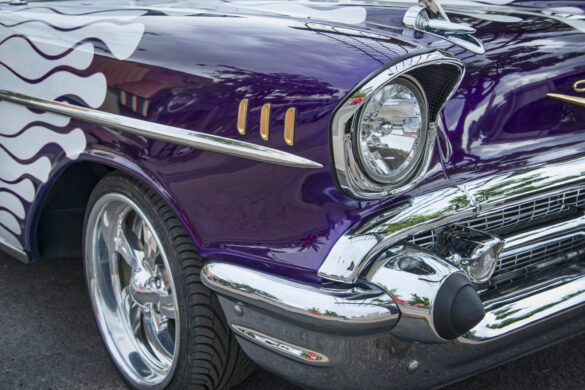
Driving a truck should feel solid, smooth, and powerful. But sometimes, even good trucks feel a little off. Maybe the response is slow, the shifting feels rough, or it just doesn’t pull the way it used to. That doesn’t always mean something is broken. A lot of the time, the truck just needs a few small changes to help it work better.
You don’t always have to tear everything apart or spend a fortune on major upgrades. There are smaller, easier changes that can actually improve how a truck drives every day. These aren’t just “extras”—they’re the kinds of changes that drivers actually notice.
Tuning Makes a Bigger Difference Than You Think
One of the first things that can help a truck feel better on the road is tuning. Factory settings are made to keep everything super safe and fuel-efficient, but they also hold back a lot of the power and response the engine can give. That’s why many trucks feel kind of sluggish, especially under load or going uphill.
Tuning lets the engine’s computer get new settings that actually match how the truck is being used. It can help with faster acceleration, better fuel use, and smoother gear shifts. Even basic tuning can make the truck feel more alive without changing anything else under the hood.
Drivers who want to make that kind of change without guessing where to start could check out RaceMe. Their products are designed to work with diesel trucks like the Dodge RAM, making tuning easier and more reliable—especially if you’ve never done it before.
Air Filters Aren’t Exciting, but They Matter
Another easy change that helps performance is upgrading the air filter. A dirty or worn-out filter blocks airflow, and engines need clean air to run right. If the engine isn’t getting enough air, it can feel slow and waste more fuel.
Swapping in a better filter—or even a full cold air intake—helps the engine breathe easier. That makes it more responsive, especially when accelerating or towing. It’s a simple change that takes very little time but actually helps performance and fuel economy.
Throttle Response Can Be Improved
Sometimes a truck just feels delayed when you press the pedal. That’s called throttle lag, and it’s more common than most people think—especially in newer trucks with drive-by-wire systems.
Throttle controllers can help with that. These devices adjust how the throttle responds to pedal input. Instead of a slow ramp-up, the response is quicker and smoother. It doesn’t add more power, but it makes the truck feel stronger and more responsive when you’re driving in traffic, merging onto highways, or climbing hills.
For drivers who are tired of that slight delay every time they step on the gas, this change can be surprisingly noticeable.
Exhaust Systems Aren’t Just for Sound
Upgrading the exhaust can also help a truck drive better, even if you don’t care about making it louder. A better exhaust system helps the engine get rid of used air faster, which makes room for fresh air and fuel. That leads to smoother performance and lower engine temperatures.
Performance exhaust systems can also reduce pressure on the turbo in diesel engines. That means quicker spool times, stronger acceleration, and better long-term engine health. The truck doesn’t just sound better—it feels better.
Transmission Tuning for Smoother Shifting
A lot of people tune the engine but forget about the transmission. If the truck still shifts at the wrong time or feels rough between gears, the driving experience won’t improve much—even with extra horsepower.
Some tuning tools also let you adjust transmission settings. This helps the truck hold gears longer when needed, shift smoother, and react better under heavy loads. When the engine and transmission work together, driving feels much more controlled and consistent.
Keep Fluids and Filters Fresh
It might not sound like an upgrade, but keeping fluids and filters clean helps everything work better. Old transmission fluid can cause rough shifts. A clogged fuel filter can mess with power and cause hesitation. Even a slightly low coolant level can make the engine run hotter and reduce performance.
Just taking the time to check and replace these regularly can prevent small problems that make the truck feel off. It’s one of the easiest ways to keep everything running right without adding any new parts.
What to Expect After Small Changes
When these small upgrades are done right, they don’t just help with performance—they make the whole driving experience feel smoother. Acceleration feels quicker, shifting becomes more natural, and towing doesn’t feel as hard on the engine.
You won’t always see huge horsepower gains with these upgrades. But that’s not the point. These changes are about making the truck easier to drive, more fun to handle, and more responsive to what the driver wants.
Final Thoughts
Not every upgrade has to be massive to make a difference. Some of the best changes are the small ones—tuning, throttle response fixes, air filters, or basic maintenance. They don’t take much time or money, but they have a real impact on how the truck drives every day.
The key is to focus on what actually helps the truck run better, not just what sounds cool or looks fancy. A smoother, more responsive truck is way more enjoyable to drive—and that starts with upgrades that make sense, even if they’re simple.









